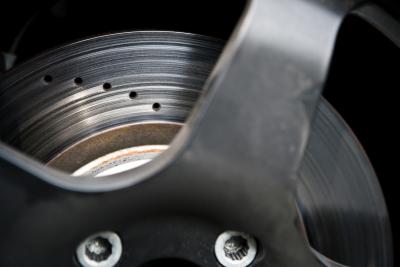
Line locks and transmission brakes are in a way similar to a sniper's scope: if you don't need one, then you'll never know it. These devices are very specialized tools used by drag racers to increase traction at launch and even to reduce reaction times by employing them as triggering mechanisms for a launch.
Cold rubber is hard rubber, and hard rubber doesn't grip the track. While modern tire manufacturers typically formulate tire rubber to provide maximum traction at lower temperatures, the burnout still has a place in drag racing. A burnout not only looks cool as an overt display of power, it cleans off anything that's stuck to the tires. A "rolling" burnout is also kind of a public service to other drivers because it lays down a bit of rubber onto the track surface. This treats the surface and helps other cars to launch.
Drag cars use wide tires for traction, which is good for traction at launch, but makes doing a burnout slightly more difficult. While neophytes and street kids might simply power brake the car -- apply the brakes and throttle at the same time -- seasoned racers know that power braking is a very efficient way to fry your rear brakes. The ideal solution would be to apply braking pressure only to the non-driven wheels during a burnout. Front-wheel-drive racers can often do this simply by pulling and locking the emergency brake, but rear-drivers need something a bit more sophisticated.
The main component of a line lock system is a solenoid-activated valve in the brake line leading from the master cylinder to the front brakes. This valve is normally open, permitting flow to and from the brakes. To apply the line lock, a driver applies the brakes and then hits a switch to close the valve. After releasing the brake pedal, pressure stays trapped in the front brakes and locks them. Now, the driver can either use his left foot to slip the clutch and his right foot to control the throttle, or just mash the throttle on an automatic-equipped car.
There are three basic ways to use a line lock: The driver can use it to either completely lock the front brakes for a stationary burnout, to partially lock them by modifying line pressure so the car can roll slowly forward for a rolling burnout or to completely lock all four wheels as a means of launch control. In the latter case, the brake system uses a separate solenoid valve for the front and rear brakes; also, the actuator button will often be mounted on the shift knob. This arrangement helps to keep manual-transmission cars in place while staging, and acts as a sort of "trigger" to launch the car.